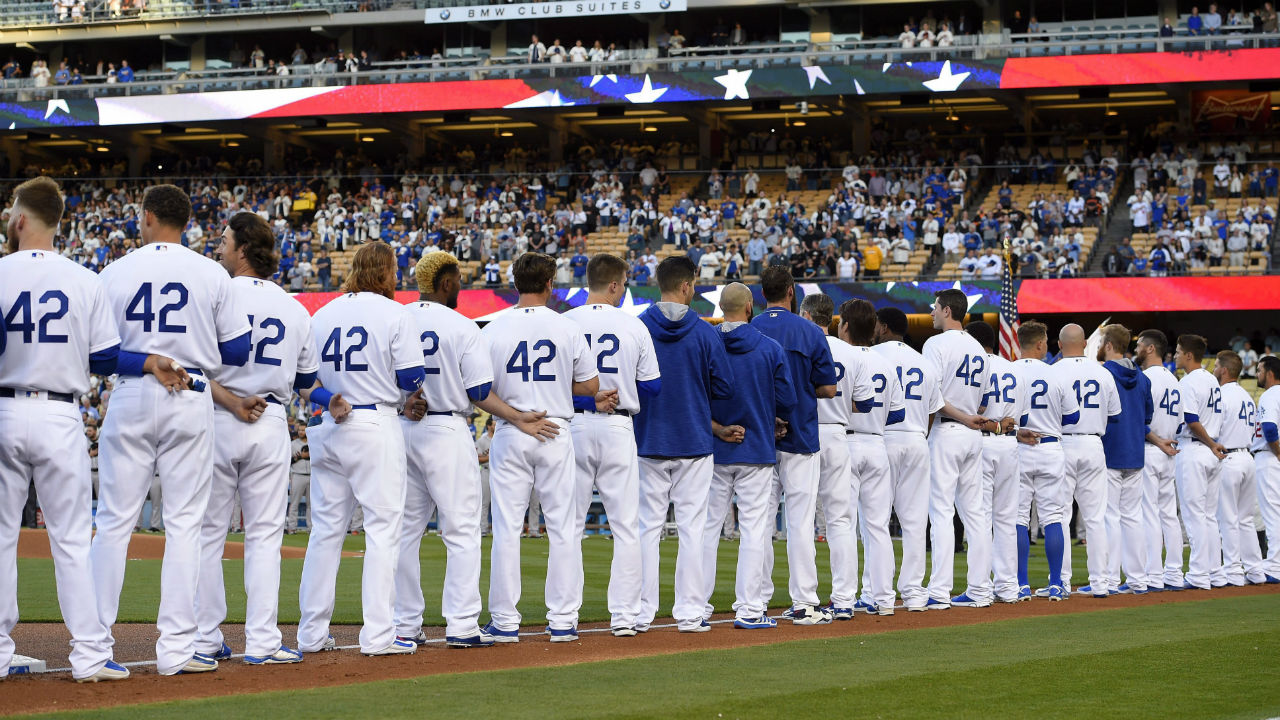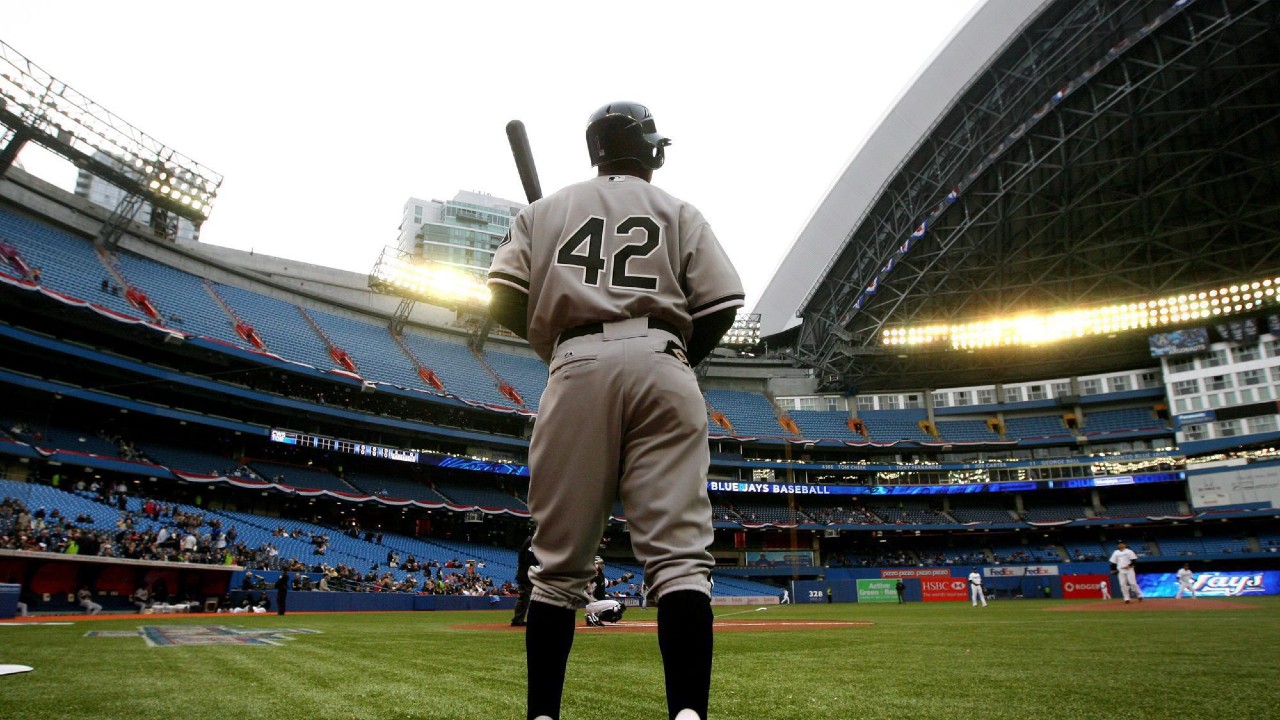There will be anniversary patches on uniforms. Special lineup cards. A virtual first pitch from the Negro Leagues Baseball Museum. And then…
And then what?
Major League Baseball will make a grand show of acknowledging the importance and impact of the Negro Leagues during Sunday’s games, and like everything else in this pandemic season, it will be with a nod toward the present reality. The 100th-year celebration itself was originally scheduled for June 27 — it was on that date that the Negro Leagues were formed in a meeting at Kansas City’s Paseo YMCA — but there was no baseball on June 27, 2020, and there will be no fans in the stands to bear witness today.
And what will Major League Baseball be acknowledging, anyhow? Certainly, it has to be the glory of the men who played in the Negro Leagues, and with each passing year we lose more of them; we lose their stories and their spirit and their truths. It must also acknowledge the institutional racism of Major League Baseball’s colour barrier that prevented Negro League players from competing with white players,
Baseball will do this up right, no doubt. At least as right as it can. Because the truth is, coming to grips with the complicated legacy presented by the life and death of the Negro Leagues has been less tricky than you might imagine due in part to the efforts of MLB commissioner Bud Selig, who along with lieutenants and advisors such as Bill White, Hank Aaron and Frank Robinson, created a climate that allowed for open discussion of the game’s racial injustices, a growing recognition of the meaning behind the Negro Leagues and the corollary that accompanies it: the breaking of the colour barrier by Jackie Robinson on April 15, 1947.
Whatever his reasons or inclinations, it has always seemed to me — as someone who has covered the game since 1989 — that it is the one aspect of his stewardship for which Selig never received enough credit.
But that seems irrelevant these days. Because as we gaze out from our quasi-quarantines, it is no longer enough to simply say: “Yeah, we in baseball were as racist if not more racist than much of society back in the day… but, hey, we’ve retired Robinson’s No. 42 and hold a day each year where every player wears his number! How ‘bout that!”
It never was enough, really, but at a time when the murders of African-Americans by police officers has forced an awareness of and long-needed reckoning with systemic racism, it is incumbent on baseball to do more than simply run out Robinson or pay homage to the Negro Leagues.
The time for fig leaves has passed.

To that end, Major League Baseball’s response to this summer of reckoning might best be described, charitably, as halting. While other organizations were quick to issue releases pledging to do more to further awareness of police brutality against African-Americans or simply express outrage after the murder of George Floyd, Major League Baseball waited nine days and in its release did not mention the words “police brutality.”
And while leagues such as the NBA and Major League Soccer made supporting efforts aimed at societal change a daily focal point — like their counterparts in Europe, MLS players (including match officials) took a knee before the whistle to start the game — MLB had players kneel and hold a black ribbon before the playing of the national anthem during opening day and then… well, it just left them to their own devices. Absent official or even unofficial support, the few players who knelt during the anthem eventually stopped.
It is true that there is something odd in the toting up or de facto “grading” of protests — it’s like figuring out the perfect way to mourn — but only a tone-deaf organization would decide to essentially shrug its shoulders and (forgive the mixing of sports metaphors) punt on the matter.
It’s frustrating. It would be wrong to say baseball doesn’t understand that it has an issue making in-roads in the African-American community. It can see the same numbers and come up with the same anecdotal evidence as the rest of us. Those numbers suggest it is not even an after-thought with the African-American community and that it is losing yet another generation. This recognition of the Negro Leagues comes at a time when MLB has an African-American player pool of around eight per cent.
And as the terrific Stephanie Apstein of Sports Illustrated pointed out in an enterprising piece earlier this season, the game is no better off elsewhere. She cited a New York Times study in 2018 that showed only four per cent of NCAA baseball players were African-American, including the nugget that many so-called “black colleges” such as Bethune-Cookman did not have an African-American starter.
And it isn’t as if Major League Baseball hasn’t tried stuff. There are rules on minority hiring or at least the necessity of interviewing visible minority candidates, initiatives to get the game into inner cities, including building new ballparks and, of course, the ritualistic honouring of some of the game’s African-American stars of the past.
Yet it’s to the game’s shame that it continues, for example, to have its Most Valuable Player Awards bear the name of Judge Kennesaw Mountain Landis, who as the game’s first commissioner played a foundational role in keeping African-Americans out of the majors. It’s a simple fix (as the only player to have been named MVP in both the National and American League, and as the first African-American manager, how on earth isn’t Frank Robinson’s name on the damned things) and while it won’t cure everything it would be a further, institutional recognition of past institutional wrongs.
[relatedlinks]
As articles by Apstein and others have pointed out, there are myriad socio-economic issues damaging the game’s grassroots growth among African-American communities that MLB alone can’t address. But there is something to be said for taking care of what you control, and removing as many impediments to inclusivity as possible is a start. And this goes beyond African-American sensitivities… the game has a huge Latino constituency and history that is horribly underserved as well.
In matters of race and baseball, I’ve always found it wise to remember some of the lessons delivered by the likes of Felipe Alou and Cito Gaston, among the most lasting a comment made by the former, the first native of the Dominican Republic to manage in the majors, who said people of colour can never feel truly served by the game until “we can be hired and fired and re-hired just like all the white guys who get second and third chances.”
And so this is where we find the game today, as it once again deals with its confounding history. The story of the Negro Leagues is complex: it existed in large measure because Major League Baseball kept its door closed to African-American players until 1947. It died in part because when baseball finally did open its doors, many of its stars left for the Majors or minor leagues.
Four years after Robinson joined the Brooklyn Dodgers, the last Negro League — the Negro American League — closed shop. But it would be wrong to say systemic racism in the game evaporated. The Philadelphia Phillies didn’t field an African-American player until John Kennedy in 1957; the Boston Red Sox didn’t have their first African-American player until Elijah “Pumpsie” Green in 1959. Baseball historians will note that this was six years before Jim Crow laws were finally overturned, but that doesn’t excuse the slow pace of integration in the game.
Major League Baseball’s racism created the need for the Negro Leagues. The leagues become wildly popular and cut into its financial wellbeing. Then, it killed them off. Altruism? The righting of historic, moral wrongs? Or altruism with a significant economic benefit.
It’s complicated.

Ten years ago, I sat in the living room of Walter Lee Gibbons in Tampa. A former Negro League pitcher who went by the nickname “Dirk” or “Bubble Gum” — yes, he had a bubble-gum machine in his living room — Gibbons ended up playing baseball in Western Canada along with several other former Negro Leaguers after the exit of star players dealt a financial hammer blow to the Negro Leagues. Gibbons, who passed away in 2015, is a member of the Manitoba Baseball Hall of Fame and he remembers making more money pitching in places such as Carman and in Winnipeg than he did in the Negro Leagues. His reception as a man of colour was, he told me, for the most part no different than that of any other stranger who showed up in a small town.
Three years ago, in my own hometown of Morden, Man., I visited with Almer McKerlie, who as a teenager from southern Manitoba played with several of the former Negro Leaguers after a spell in the St. Louis Cardinals’ minor-league system. “It was a heckuva time,” McKerlie said. Baseball flourished in Manitoba, Saskatchewan and Alberta; out of the economic death of the Negro Leagues was born a rich part of Canada’s sports history.
So today is about something much deeper and profound than having a day or running television advertisements with celebrities “tipping their cap,” to Negro Leaguers or selling vintage jerseys or hats of the Kansas City Monarchs.
For me, it will be a celebration of the spirit and tenacity of men such as Josh Gibson, Buck O’Neil, Buck Leonard, Oscar Charleston, Cool Papa Bell and Satchel Paige. I will think of Larry Doby, Willie Mays, Don Newcombe, Roy Campanella and Henry Aaron, just some of those players who followed Jackie Robinson into the Major Leagues. I will think of Bob Kendrick, the president of the Negro League Museum, who will continue to fight the good fight and remind us all about the vibrant cultural heritage of the Negro Leagues — the good that came out of the bad, I guess.
But I will also think of Mookie Betts and Barry Bonds, too, and contemplate their futures and past, and I will ask myself: How many more African-American players will I see go into Cooperstown? Baseball loves the Negro Leagues because it can make it fit into a narrative that says “Look how far we’ve come.” I hope Rob Manfred and the powers that be realize that now, more than ever, that’s not enough.










